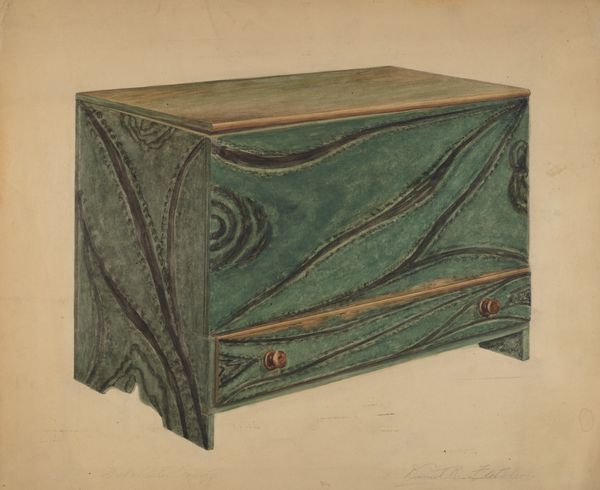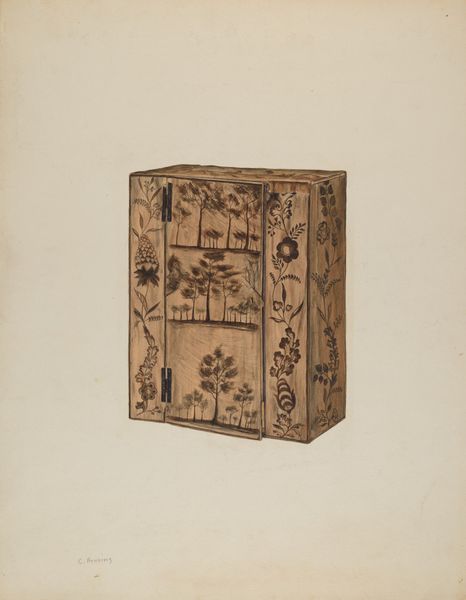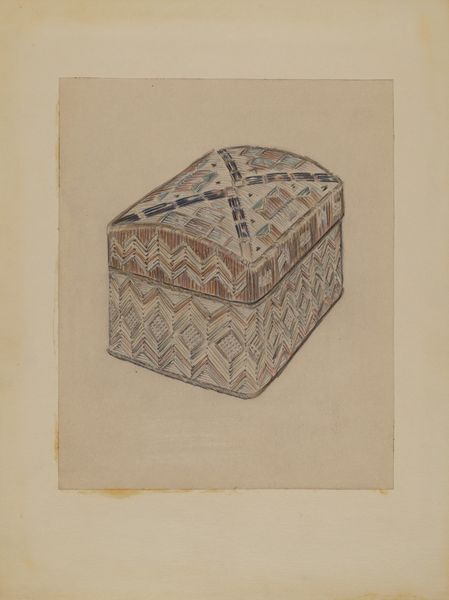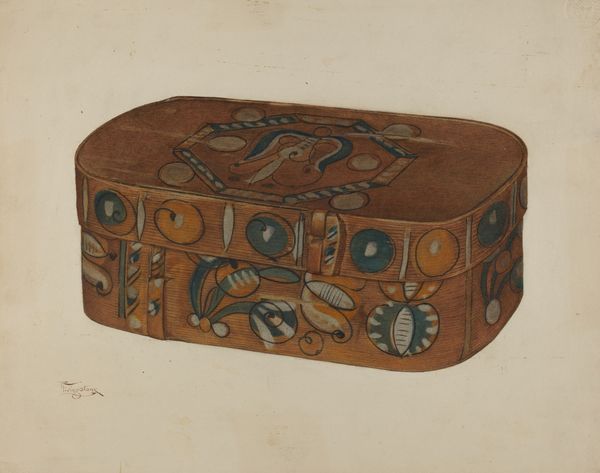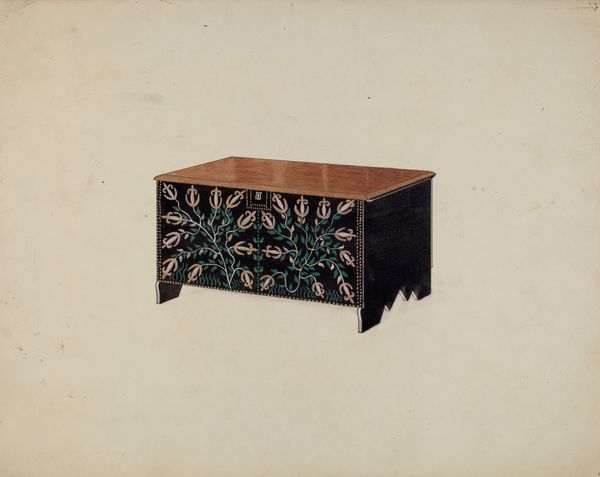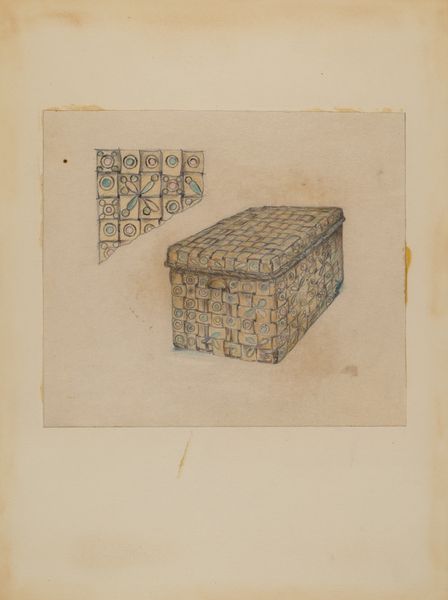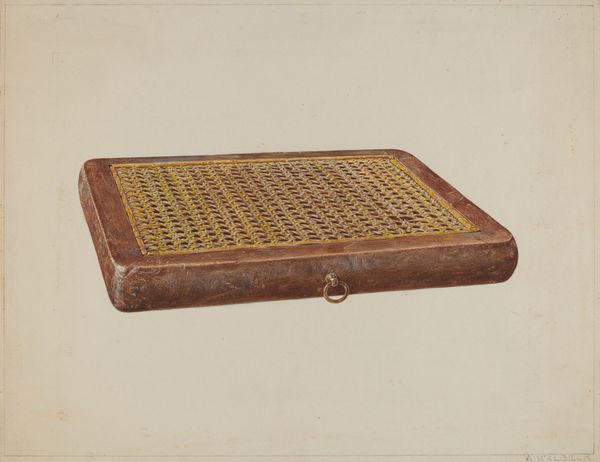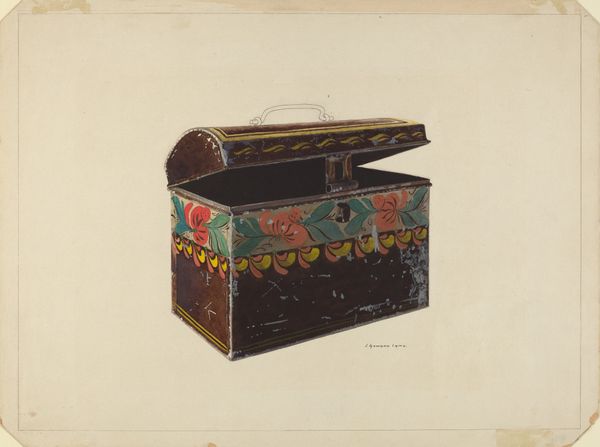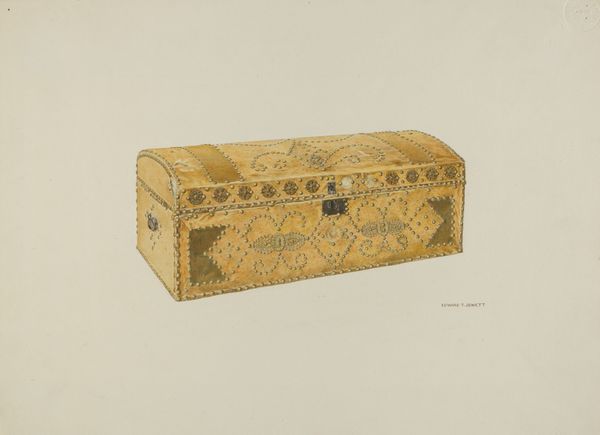
drawing, watercolor
#
drawing
#
water colours
#
watercolor
#
watercolour illustration
#
decorative-art
#
watercolor
Dimensions: overall: 37.6 x 45.3 cm (14 13/16 x 17 13/16 in.) Original IAD Object: 8 1/2" high; 10 3/4" deep; 11" wide
Copyright: National Gallery of Art: CC0 1.0
Editor: Here we have Carl Strehlau's "Pa. German Chest," likely rendered around 1940. It's a delicate watercolor drawing, and I'm immediately drawn to the repeating floral patterns. How do you read the visual organization and material presence of this artwork? Curator: The composition presents a fascinating interplay of form and pattern. The artist employs a visual strategy that invites us to contemplate the principles of organization intrinsic to the work itself. Note the artist’s chosen medium, watercolour. It inherently conveys subtlety, lending itself to an examination of layering and transparency. Consider the repetitive floral design; what does this motif evoke structurally and philosophically? Editor: I suppose it creates a sense of rhythm, almost like a textile design, but it's still clearly representational of a three-dimensional object. The artist seems to balance abstraction and reality. Curator: Precisely. Strehlau engages the tension between surface ornamentation and structural integrity. The watercolour technique and the flattening effect of the pattern prompts us to analyze how representation relates to objecthood. Think about semiotics. Does the representation compete or agree with the material properties? Editor: So, are you suggesting that Strehlau is less concerned with depicting the object accurately and more interested in exploring formal relationships of colour, form and pattern? Curator: Yes. The artist meticulously constructs a visual framework where color and design articulate the material structure. The intrinsic values of form, colour, and compositional organization are dominant and, I would argue, reveal its aesthetic essence. What meaning might you extract? Editor: I see how a close formal analysis reveals a much richer narrative about the relationship between representation and the object. Thank you. Curator: My pleasure. Contemplating its inherent components gives you greater interpretive freedom.
Comments
No comments
Be the first to comment and join the conversation on the ultimate creative platform.


